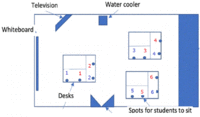I am trying to find the number of ways to arrange a classroom in 'boy, girl' order, there are 6 boys and 6 girls, I know I need to find [MATH]6![/MATH] to find how many ways the girls can be arranged and do that again for the boys, so now I have 720 ways the girls can be arranged and 720 ways the boys can be arranged.
But I read on a website that these two values must be multiplied. I have no idea why.
But I read on a website that these two values must be multiplied. I have no idea why.



